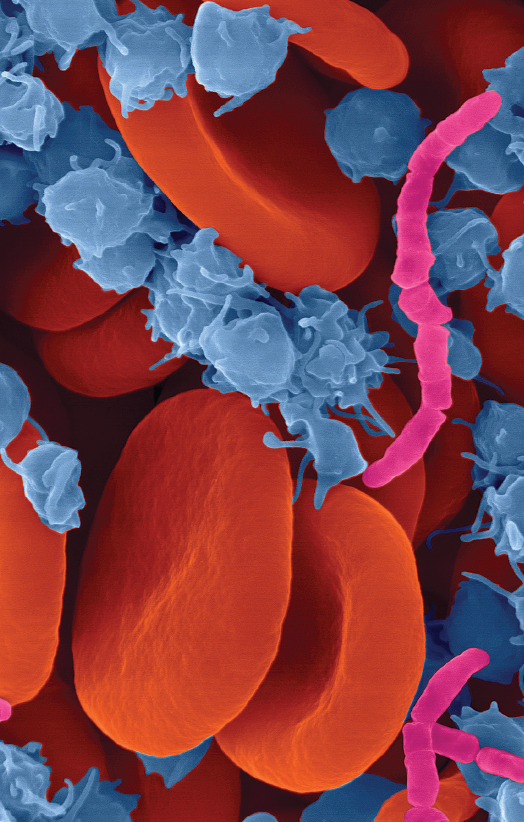- Our Story
- Publications & Resources
- Publications & Resources
- Publications
- IEEE Signal Processing Magazine
- IEEE Journal of Selected Topics in Signal Processing
- IEEE Signal Processing Letters
- IEEE Transactions on Computational Imaging
- IEEE Transactions on Image Processing
- IEEE Transactions on Information Forensics and Security
- IEEE Transactions on Multimedia
- IEEE Transactions on Signal and Information Processing over Networks
- IEEE Transactions on Signal Processing
- IEEE TCI
- IEEE TSIPN
- Data & Challenges
- Submit Manuscript
- Guidelines
- Information for Authors
- Special Issue Deadlines
- Overview Articles
- Top Accessed Articles
- SPS Newsletter
- SigPort
- SPS Resource Center
- Publications FAQ
- Blog
- News
- Dataset Papers
- Conferences & Events
- Community & Involvement
- Professional Development
- For Volunteers
- Information for Authors-OJSP
-
Home
Conferences & Workshops13 September 2027 to 16 September 2027Conferences & Workshops29 October 2025 to 31 October 2025Conferences Events IEEE Signal Processing Magazine IEEE SPL Article IEEE TIFS Article IEEE TMM Article IEEE TSP Article Jobs in Signal Processing Lectures Machine Learning Seasonal Schools Signal Processing News SPM Article SPS Distinguished Lectures SPS Newsletter Article SPS Webinar SPS Webinars SPS Webinar Series Webinar webinars
-
Our Story
What is Signal Processing?

The technology we use, and even rely on, in our everyday lives –computers, radios, video, cell phones – is enabled by signal processing. Learn More » -
Publications & Resources
-
SPS Resources
- Signal Processing Magazine The premier publication of the society.
- SPS Newsletter Monthly updates in Signal Processing
- SPS Resource Center Online library of tutorials, lectures, and presentations.
- SigPort Online repository for reports, papers, and more.
- SPS Feed The latest news, events, and more from the world of Signal Processing.
-
SPS Resources
-
Conferences & Events
-
Community & Involvement
-
Membership
- Join SPS The IEEE Signal Processing Magazine, Conference, Discounts, Awards, Collaborations, and more!
- Chapter Locator Find your local chapter and connect with fellow industry professionals, academics and students
- Women in Signal Processing Networking and engagement opportunities for women across signal processing disciplines
- Students Scholarships, conference discounts, travel grants, SP Cup, VIP Cup, 5-MICC
- Young Professionals Career development opportunities, networking
- Get Involved
-
Technical Committees
- Applied Signal Processing Systems
- Audio and Acoustic Signal Processing
- Bio Imaging and Signal Processing
- Computational Imaging
- Image Video and Multidimensional Signal Processing
- Information Forensics and Security
- Machine Learning for Signal Processing
- Multimedia Signal Processing
- Sensor Array and Multichannel
- Signal Processing for Communication and Networking
- Signal Processing Theory and Methods
- Speech and Language Processing
- Technical Working Groups
- More TC Resources
-
Membership
-
Professional Development
-
Professional Development
- Signal Processing Mentorship Academy (SigMA) Program
- Micro Mentoring Experience Program (MiME)
- Distinguished Lecturer Program
- Distinguished Lecturers
- Distinguished Lecturer Nominations
- Past Lecturers
- Distinguished Industry Speaker Program
- Distinguished Industry Speakers
- Distinguished Industry Speaker Nominations
- Industry Resources
- IEEE Training Materials
- Jobs in Signal Processing: IEEE Job Site
-
Career Resources
- SPS Education Program Educational content in signal processing and related fields.
- Distinguished Lecturer Program Chapters have access to educators and authors in the fields of Signal Processing
- Job Opportunities Signal Processing and Technical Committee specific job opportunities
- Job Submission Form Employers may submit opportunities in the area of Signal Processing.
-
Professional Development
-
For Volunteers
-
For Board & Committee Members
- Board Agenda/Minutes* Agendas, minutes and supporting documentation for Board and Committee Members
- SPS Directory* Directory of volunteers, society and division directory for Board and Committee Members.
- Membership Development Reports* Insight into the Society’s month-over-month and year-over-year growths and declines for Board and Committee Members
-
For Board & Committee Members
Popular Pages
Today's:
- Congratulations to Signal Processing Society Members Elevated to Senior Members!
- Information for Authors
- (ASRU 2025) 2025 IEEE Automatic Speech Recognition and Understanding Workshop
- Access Restricted
- IEEE Transactions on Multimedia
- IEEE Transactions on Information Forensics and Security
- IEEE Transactions on Image Processing
- IEEE Signal Processing Letters
- IEEE Transactions on Signal Processing
- Research Assistant (PhD/Postdoc) in the Field of 1-bit 3D Imaging
- Submit a Manuscript
- (ISBI 2026) 2026 IEEE 23rd International Symposium on Biomedical Imaging
- IEEE Transactions on Audio, Speech and Language Processing
- Membership
- Information for Authors-SPL
All time:
- Information for Authors
- Submit a Manuscript
- IEEE Transactions on Image Processing
- IEEE Transactions on Information Forensics and Security
- IEEE Transactions on Multimedia
- IEEE Transactions on Audio, Speech and Language Processing
- IEEE Signal Processing Letters
- IEEE Transactions on Signal Processing
- Conferences & Events
- IEEE Journal of Selected Topics in Signal Processing
- Information for Authors-SPL
- Conference Call for Papers
- Signal Processing 101
- IEEE Signal Processing Magazine
- Guidelines
Last viewed:
- IEEE Transactions on Audio, Speech and Language Processing
- Research Assistant (PhD/Postdoc) in the Field of 1-bit 3D Imaging
- Editorial Board
- Research Assistant (PhD/Postdoc) in the Field of Computational Time-of-Flight 3D Imaging
- IEEE Transactions on Image Processing
- (ICME 2026) 2026 IEEE International Conference on Multimedia and Expo
- Membership
- Recent Patents in Signal Processing (February 2018) – Image and Video Compression
- IEEE Transactions on Information Forensics and Security
- Conference Call for Papers
- (ISBI 2026) 2026 IEEE 23rd International Symposium on Biomedical Imaging
- Information for Authors
- IEEE Signal Processing Letters
- MMSP Reviewer Interest
- Publications & Resources
What Should We Learn? Hospitals Fight Sepsis with AI
You are here
Newsletter Menu
Newsletter Categories
Top Reasons to Join SPS Today!
1. IEEE Signal Processing Magazine
2. Signal Processing Digital Library*
3. Inside Signal Processing Newsletter
4. SPS Resource Center
5. Career advancement & recognition
6. Discounts on conferences and publications
7. Professional networking
8. Communities for students, young professionals, and women
9. Volunteer opportunities
10. Coming soon! PDH/CEU credits
Click here to learn more.
News and Resources for Members of the IEEE Signal Processing Society
What Should We Learn? Hospitals Fight Sepsis with AI

In hospitals, doctors and nurses keep vigilant watch over patients' vital signs and blood tests to catch the first symptoms of sepsis. In this life-threatening condition, the body responds to an infection with widespread inflammation that can lead to organ failure. Cases can progress rapidly to severe sepsis and then to septic shock, which has a mortality rate of almost 50percent in the United States.
But even the most vigilant humans get tired, make mistakes, and miss subtle patterns. That's why several hospitals are experimenting with artificially intelligent sepsis detectors. Researchers say these pilot projects are the first real examples of AI being integrated into hospital operations, with data flowing from electronic medical records and alerts being incorporated into physicians' workflows.
This month, Duke University Hospital, in Durham, N.C., is officially launching Sepsis Watch, an AI-based system that identifies incipient sepsis cases and raises the alarm. The hospital is deploying it initially in the emergency department, and will then extend it to the general hospital floor and the intensive care unit. “The most important thing is to catch cases early, before they get to the ICU,” says Suresh Balu, director of the Duke Institute for Health Innovation and one of the project leads.
Sepsis Watch was trained via deep learning to identify cases based on dozens of variables, including vital signs, lab test results, and medical histories; its training data consisted of 50,000 patient records including more than 32 million data points. In operation, it pulls information from patients’ medical records every 5 minutes to evaluate their conditions, offering intensive real-time analysis that human doctors can't provide. If the AI system determines that a patient meets its criteria for someone with the early signs of sepsis, it alerts the nurses on the hospital's rapid response team.
If these AI systems do improve care, plenty of hospitals will be eager to adopt the technology, says Duke's Sendak. Beginning in July 2018, the U.S. government's
Hospital Compare website began publishing data about hospitals' records on providing early and appropriate treatment for sepsis. “The national average is about 50 percent,” Sendak says. “A lot of places struggle with this problem.”
If you want to know more about the news, you can find more from the paper entitled HOSPITALS FIGHT SEPSIS WITH AI published in IEEE Spectrum in Nov. 2018.
Open Calls
Technical Committee News
Publications News
Conferences & Events
Society News
- Job Opportunities in Signal Processing
- New SPS Technical Interest Profile Codes
- Madras Chapter Member-Driven Initiative Event: SS12 Age of Innovation
- A Special Upcoming Webinar from Dr. Lajos Hanzo: November 19, 2018
- IEEE SPS 2018 Members-at-Large and Regional Directors-at-Large Election Results
- SPS Publications Alerts: Tables of Contents Available this Month
- Upcoming Distinguished Lectures
SPS Social Media
- IEEE SPS Facebook Page https://www.facebook.com/ieeeSPS
- IEEE SPS X Page https://x.com/IEEEsps
- IEEE SPS Instagram Page https://www.instagram.com/ieeesps/?hl=en
- IEEE SPS LinkedIn Page https://www.linkedin.com/company/ieeesps/
- IEEE SPS YouTube Channel https://www.youtube.com/ieeeSPS
Home | Sitemap | Contact | Accessibility | Nondiscrimination Policy | IEEE Ethics Reporting | IEEE Privacy Policy | Terms | Feedback
© Copyright 2025 IEEE - All rights reserved. Use of this website signifies your agreement to the IEEE Terms and Conditions.
A public charity, IEEE is the world's largest technical professional organization dedicated to advancing technology for the benefit of humanity.









